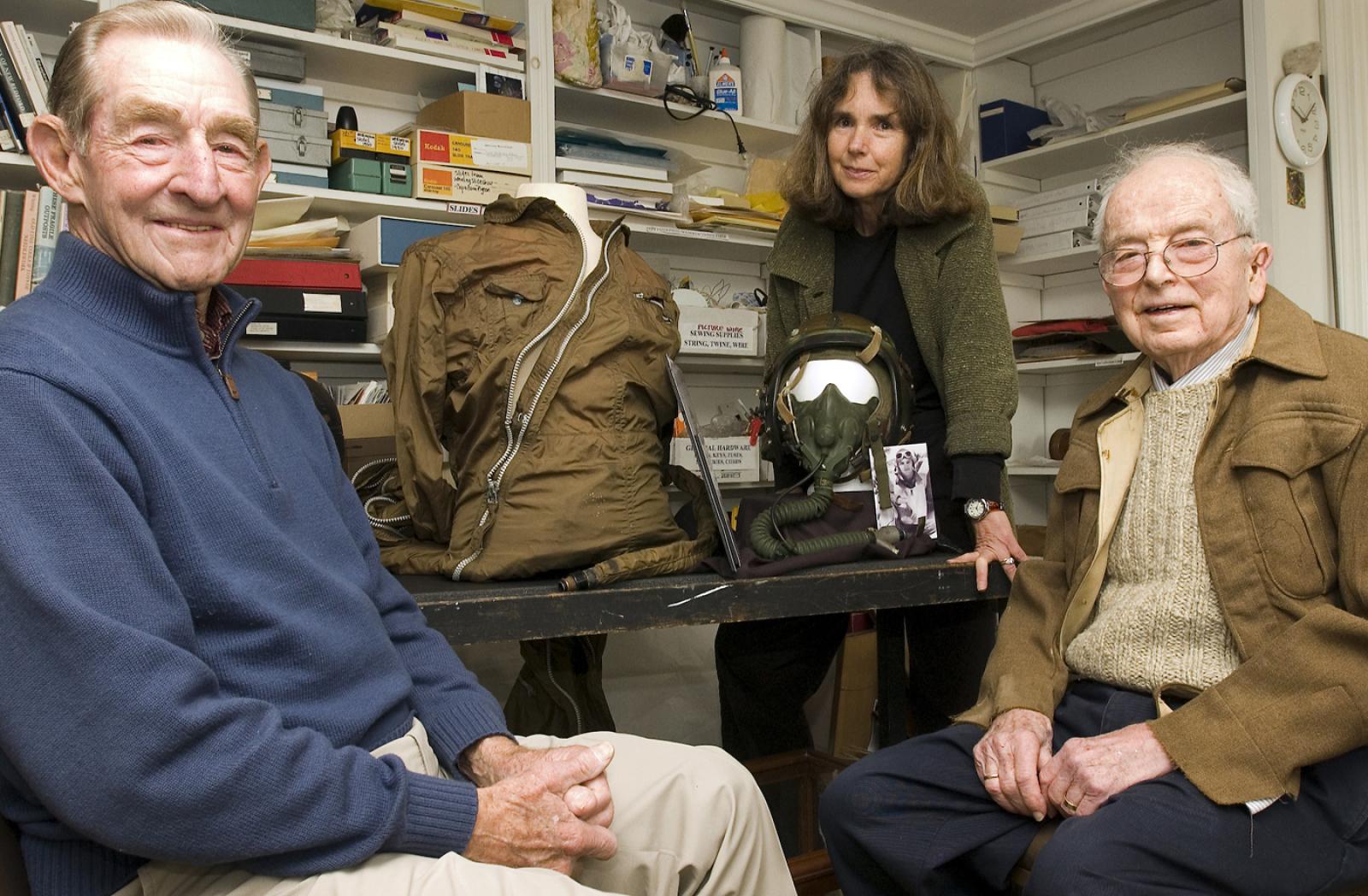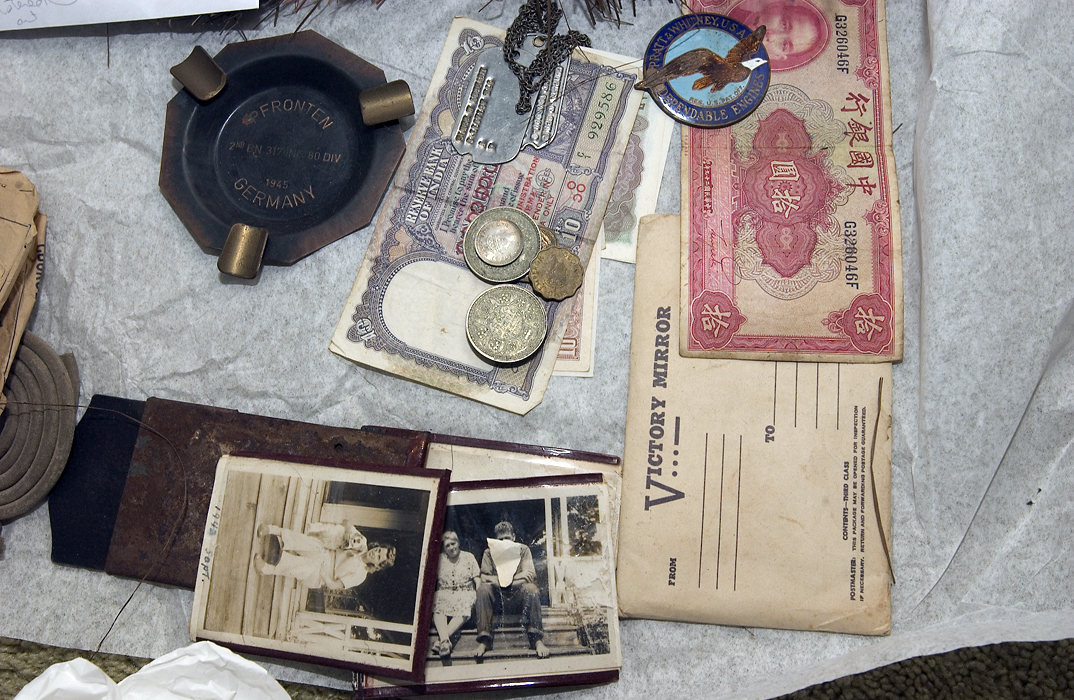S ome six decades ago the Vineyard was at war. Military outposts dotted the landscape, Islanders kept watch for enemy aircraft at East Chop Light and unlit ferries slinked across Nantucket Sound wearing battleship gray. There were air raid drills, rations and even United Service Organizations in Vineyard Haven and Edgartown that brought in the likes of Gregory Peck and Helen Hayes. And in every corner of the globe the sons and daughters of Martha’s Vineyard served, from the Pacific and European theatres to the home front in civil defense.
This Saturday will mark the opening of the exhibit Those Who Serve — Martha’s Vineyard and World War II at the Martha’s Vineyard Museum on School street in Edgartown. There will be an opening ceremony at 3 p.m. at the Federated Church on South Summer street featuring several of the Vineyarders profiled in the exhibit, followed by a reception at the museum. The exhibit will remain up through next summer.
Although the story of World War II is usually cast as a sweeping spectacle of clashing superpowers, the Martha’s Vineyard Museum exhibit will instead take a far more personal approach, focusing in particular on the experiences of 10 Islanders who recount the struggles at home and perils abroad that marked the conflict.
Visitors are invited to listen as Tom Hale of Vineyard Haven shares an intensely personal account of a war that took him from Alexandria, Egypt to the Bergen-Belsen concentration camp as an ambulance driver in the American Field Service. He recalls in stirring detail the devastation of the Italian and German countryside as well as the grief and horror that accompanied him in his encounter of the Holocaust.
Betty Honey of Vineyard Haven on the other hand provides a more lighthearted discussion of the peculiarities of rationing which led to such innovations as paper shoes and painted-on nylons (which she proudly paraded at USO dances).
For still others, such as James McLaurin of Oak Bluffs, the battle didn’t end when the war ended. As a member of the legendary all-black Tuskegee Airmen, Mr. McLaurin recalls not only the hazards of night missions over Belgium, but the menace of bigotry he encountered even after returning home from serving his country.
It is this diversity of experience represented in the exhibit that the Martha’s Vineyard Museum’s oral history curator Linsey Lee thinks will appeal to people of all backgrounds.
“The exhibit is told through people’s stories so that makes it very accessible to everyone,” she said in an interview in her Edgartown office.
“There are things about the individual battles that people can listen to and read that will appeal to the military buff, but then people who don’t know anything about World War II will be able to get excited about the stories that talk about the more personal tragedies and excitements.”
Besides the many riveting firsthand accounts of the war, the exhibit will also feature a vast collection of artifacts generously on loan from private collections, such as the pressurized suit John Mayhew wore as a fighter pilot during dangerous missions over the Pacific, Ted Morgan’s Bronze Star and Purple Heart, Ann Lesnikowski’s yearbook from her training in the Woman’s Airforce Service Pilots and even genuine SS insignias and pieces of shrapnel.
To Ms. Lee and assistant curator Anna Carringer, some of the most affecting articles are not the souvenirs collected overseas but the glimpses into daily life provided in the thousands of letters home saved by the Athearn family, who saw three brothers, Clifton, Michael and Leonard, serve abroad.
In one letter Clifton Athearn of West Tisbury describes at length the contents of his pockets.
“Shirt pocket: toothbrush, wallet, v-mirror, extra fountain pen, new testament, map of Germany and surrounding countries, address book, stick of chewing gum, two small notebooks, one squashed caramel wrapped in cellophane . . .” he wrote in part.
But the centerpiece of the exhibit may be Chandler Moore’s epic mural of the Battle of Britain which hung for decades in the Lampost in Oak Bluffs and has not been seen by Vineyarders in over 30 years. The mural, which is almost 11 feet long and will be sent away to be restored shortly after the opening, will be sure to entrance both a generation for whom it was a mainstay of Vineyard life as well as a new generation that will see it for the first time.
Ms. Lee described the painstaking lengths the eccentric Mr. Moore would take in reproducing the epic battle. “He worked with a magnifying glass and a paintbrush with one hair. Every single mechanical detail is on these ships and planes,” she said.
“It’s a very intense scene and it’s wonderfully rendered,” said Ms. Carringer. “It’s something that you really have to spend time looking at.”
Ms. Carringer said she thinks the exhibit will open people’s eyes to the quiet heroism on the Island embodied in the lives of friends and neighbors, such as Maurice Vanderpol of Edgartown, who spent two years in hiding in the Netherlands to escape Nazi persecution, or his wife Nettie, who was interned at a concentration camp in Czechoslovakia. Their story will be the subject of a video interview which will be included in the exhibit later.
“A lot of these people we all know . . . but we didn’t know these stories,” Ms. Carringer said.
The war shaped the Island in profound ways, both physical — the decommissioned naval airbase at the heart of the Manuel F. Correllus State Forest now serves as a bustling airport — and personal — many Islanders, such as Hector Asselin, were brought to the Island by the war and found love and a new home. Almost no one on the Island was left unaffected by this wrenching chapter in history.
“It’s so easy these days to forget about war or put it out of your mind if you aren’t fighting it,” said Ms. Carringer. “Some people can just pretend that there’s nothing going on. You just couldn’t do that back then.”
The exhibit opens tomorrow at the Federated Church in Edgartown at 3 p.m., followed by a reception at the museum. Admission is free to members; $10 for nonmembers.





Comments (1)
Comments
Comment policy »